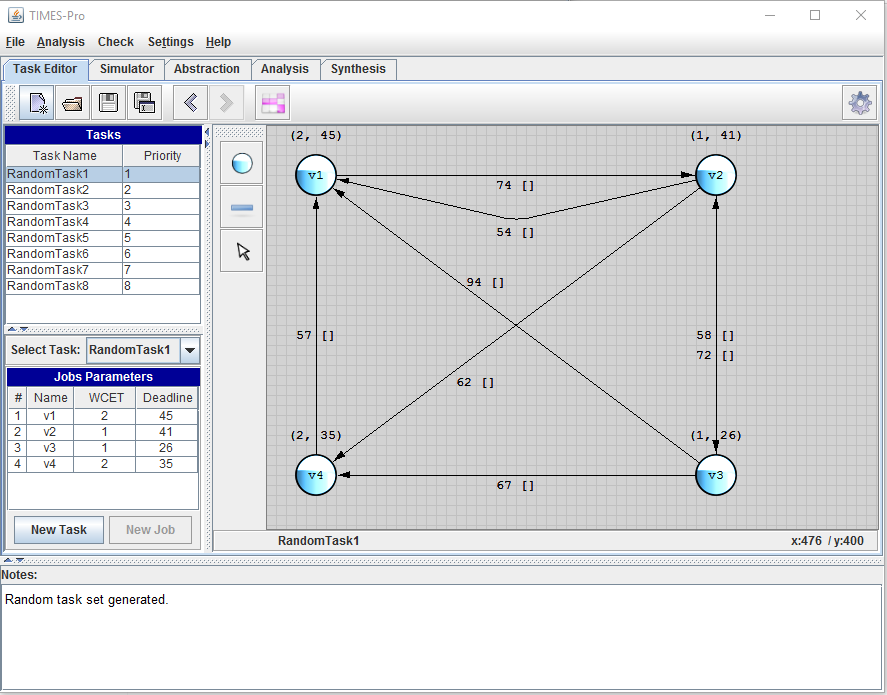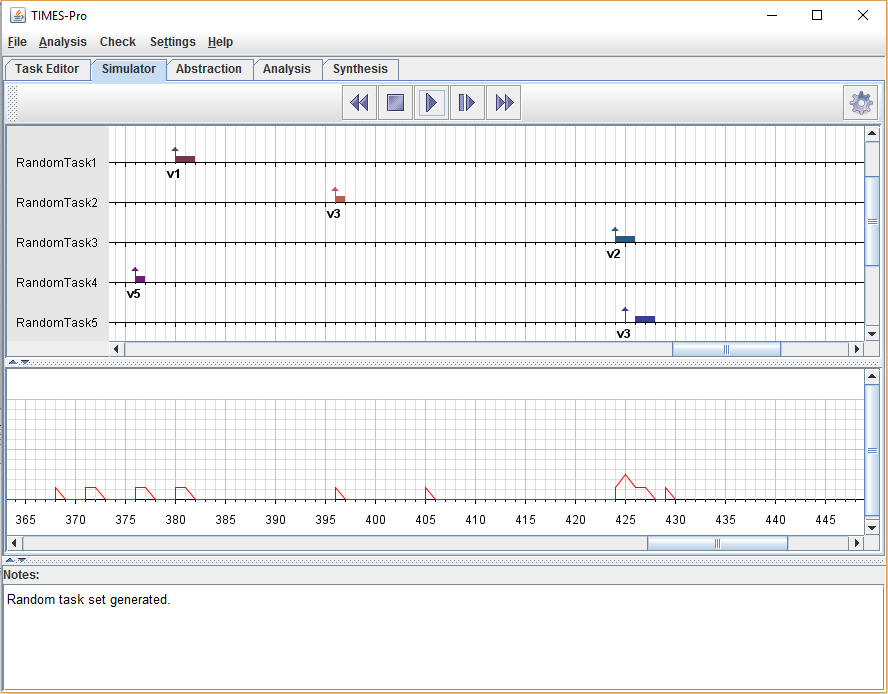Features
The current version of TIMES-Pro is a client/server application implemented in Java and Python. It is currently available for Linux and Windows platforms.
The features of TIMES-Pro are:- A system editor to graphically model a system and its associated timing, execution resource and synchronization requirements. A system description consists of either a DRT or SDRT task set. The list of all tasks with their assigned priorities is shown in the left side of the main graphical editor. Tim- ing properties of the jobs of a selected task is presented in a table below the task set. All the properties (including the names) of both the task set and jobs properties table are editable. In the main graphical editor, a task is described by its directed cyclic graph structure. User can define a jobtype by assigning its WCET, relative deadline and associated execution code segment. Different job types are connected by edges where the user can specify the minimum inter-release time between the two jobs. As an incoming edge denotes release constraints of the job, a synchronization action relevant to this job is also specified as the edge prop- erty. In the first option, the system designer explicitly states the branching condition variable together with the job code. Branching conditions are also allowed inside a job.
- A graphical simulator to dynamically visualise the execution behavior and the resource utilization of a system model. The simulator generates possible execution traces with zero or random initial phase. This trace is displayed either stepwise or continuously up to the first deadline miss. It is possible to configure the speed of visual simulation within a scale of 1 to 10. System utilization is dynamically displayed below the main simulation. Currently the simulator supports fixed priority and EDF scheduling simulation on a uniprocessor.
- An Analyzer to check that the tasks associated to a system model satisfy their timing requirements. The analysis suite includes schedulability analysis of tasks under Fixed Priority and EDF scheduling, computation of worst-case response times of tasks and partitioning of workload into multiprocessors. To help testing the algorithms, analyzer has a configurable random task genera- tor which can generate task sets of different size and utilization. Additionally, analyzer provides visualization data of different abstractions used for analysis like request functions.
- A code generator to generate executable Ada code from task sets. The code generator realises a subset of the behavior specified in the DRT/SDRT task model and assumes Ada runtime system will ensure proper execution of the generated code.

Figure 1: The editor in the TIMES-Pro GUI.

Figure 2:The simulator in the TIMES-Pro GUI.

Figure 3: The analyser in the TIMES-Pro GUI.
Team
The people involved (current and former) with development and application of TIMES-Pro are
- Wang Yi, Professor, UU.
- Morteza Mohaqeqi , Former Postdoc, UU. Currently in Iran.
- Jakaria Abdullah, PhD student, UU.
- Gaoyang Dai, PhD student, UU.
- Martin Stigge, Former PhD student, UU. Employed in Arista Networks.
- Pontus Ekberg, Former PhD student, UU. Postdoc in UU.
- Nan Guan, Former PhD student, UU. Associate Professor, NEU, China.
Contact us
To be added soon.